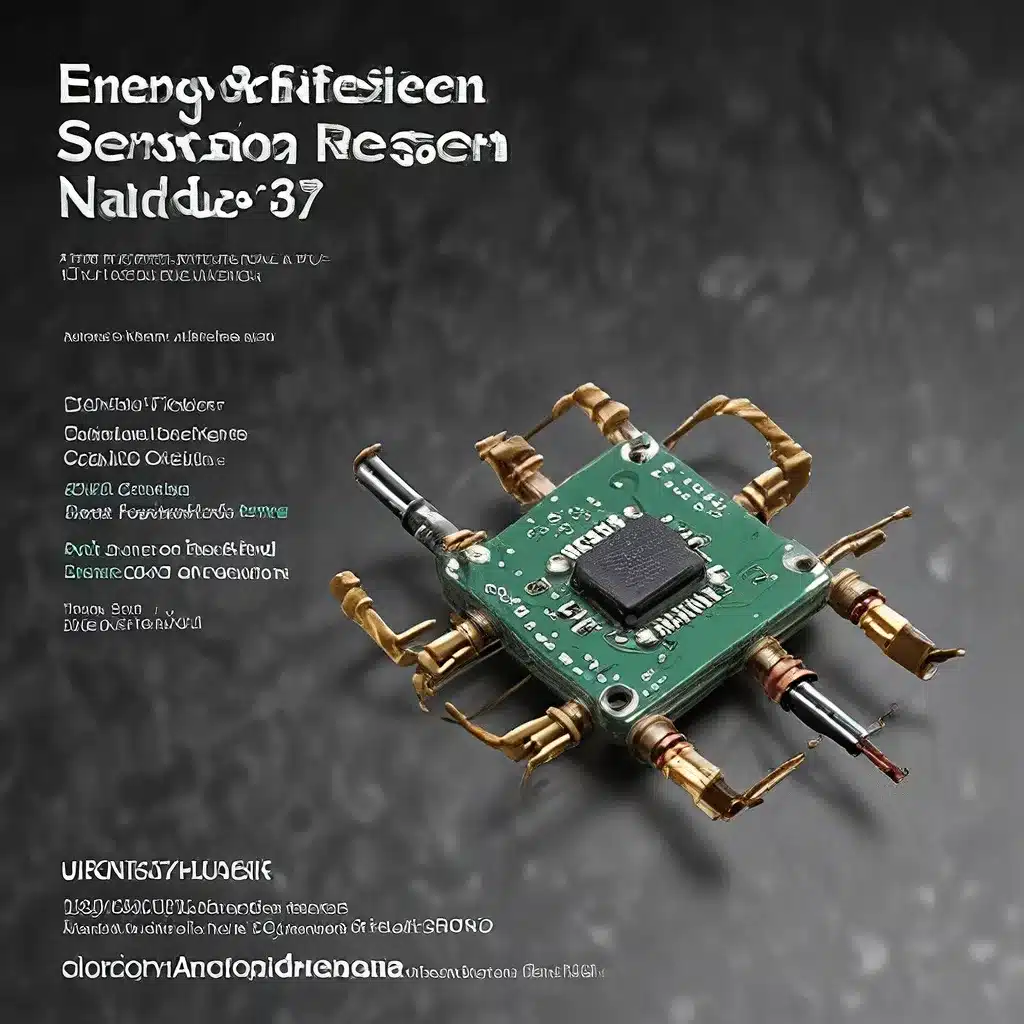
Powering the IoT Revolution: Optimizing Sensor Node Performance
In the era of the Internet of Things (IoT), sensor networks have become the backbone of a connected world, enabling a wide range of applications, from industrial automation to smart home management. As the demand for IoT solutions continues to grow, the need for energy-efficient sensor nodes has become increasingly critical. Sensor nodes, the fundamental building blocks of these networks, must operate reliably and autonomously, often in remote or inaccessible locations, making power consumption a crucial factor in their design and deployment.
The Quest for Low-Power Sensor Nodes
Sensor nodes typically operate on limited power sources, such as batteries or energy harvesting systems, making power optimization a key challenge in sensor network design. Advancements in microcontroller (MCU) technology have played a significant role in addressing this challenge, with the emergence of ultra-low-power MCUs designed specifically for IoT and sensor network applications.
One such example is the Renesas RA2L1 MCU, part of the RA Family of 32-bit ARM Cortex-M23-based MCUs. These MCUs are designed with energy efficiency at the forefront, offering a range of innovative features to minimize power consumption and extend battery life in sensor nodes.
Renesas RA2L1 MCUs utilize advanced power and clock gating techniques to reduce power consumption, allowing sensor nodes to spend most of their time in a low-power standby mode, only waking up when necessary to process data, make decisions, and communicate with other system components. When benchmarked for power consumption, the RA2L1 MCU achieved an EEMBC ULPMark score of 304 at 18V, verifying its best-in-class power rating.
Optimizing Sensor Node Power Management
In addition to the energy-efficient MCU design, sensor nodes require a holistic approach to power management to achieve maximum efficiency. This includes integrating power-saving features at the system level, such as dynamic voltage and frequency scaling (DVFS), selective peripheral activation, and intelligent duty cycling.
DVFS allows the sensor node’s MCU to dynamically adjust its operating voltage and frequency based on the computational demands of the task at hand, reducing power consumption during periods of low activity. Selective peripheral activation ensures that only the necessary peripherals are powered on, further minimizing the overall power draw. Intelligent duty cycling involves strategically powering down the sensor node when it is not in use, and rapidly waking it up when required, optimizing the balance between responsiveness and energy savings.
Sensor Node Security and Reliability
As sensor networks become increasingly integral to critical infrastructure and sensitive applications, the security and reliability of sensor nodes have emerged as paramount concerns. The Renesas RA2L1 MCUs address these challenges by incorporating robust security features, including an AES cryptography accelerator, a true random number generator (TRNG), and memory protection units.
These security features enable the development of secure IoT systems, protecting sensor data and communications from potential cyber threats. Additionally, the RA2L1 MCUs offer self-test libraries and integrated safety functions that provide confirmation of normal operation, ensuring the reliability and integrity of the sensor nodes.
Versatile Sensor Node Interfaces and Connectivity
Sensor nodes must not only be energy-efficient and secure, but also versatile in their connectivity and interface options. The Renesas RA2L1 MCUs address this requirement by integrating a wide range of analog, communication, and timing peripherals, including capacitive touch sensing capabilities.
The advanced capacitive touch interface in the RA2L1 MCUs allows for enhanced operability in various touch and touchless system implementations, supporting sensing through thick acrylic or glass panels and enabling proximity sensing, hovering, and 3D gestures. This feature can be particularly useful in hygiene-sensitive or safety-critical applications, where direct touch may not be desirable.
Furthermore, the RA2L1 MCUs are supported by the Flexible Software Package (FSP), which includes FreeRTOS and a premium device-to-cloud middleware option, allowing for seamless integration with a variety of software and hardware building blocks from the extensive Arm ecosystem.
Driving the Future of Sensor Networks
As the IoT landscape continues to evolve, the demand for energy-efficient, secure, and versatile sensor nodes will only increase. The advancements in ultra-low-power MCU design, exemplified by the Renesas RA2L1 MCUs, are paving the way for sensor networks that can operate autonomously for extended periods, enhancing the reliability and scalability of IoT solutions across a wide range of industries.
By leveraging these cutting-edge sensor node technologies, engineers and developers can push the boundaries of what is possible in the world of sensor networks and IoT, unlocking new applications and improving existing ones to create a more connected and efficient future.
Explore the sensor network ecosystem and discover how energy-efficient sensor nodes are transforming the way we interact with the world around us.